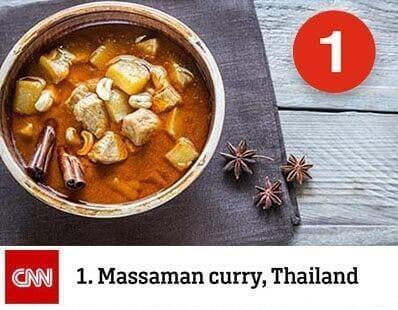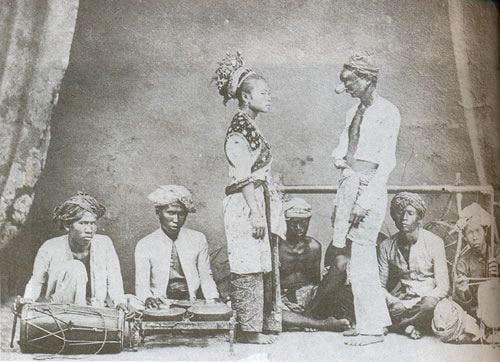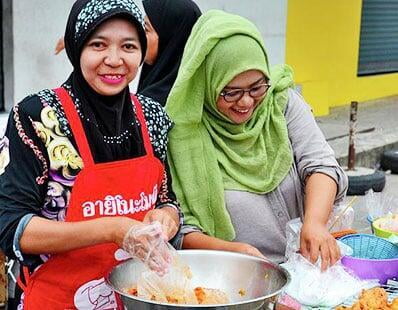My shopping cart
Your cart is currently empty.
Continue Shopping
Thai dishes have won over the hearts of foodies all over the world. A sentiment that is shared globally and was made official in CNN’s readers’ poll on the “World’s Best Food”, a vote which amounted to a chart of the top 100 most delicious dishes being served across the planet.

The famous Massaman curry was crowned as the winning dish in both editions of this popular survey, which took place in 2011 and again in 2017.
Dubbed as “the king of curries and perhaps the king of all foods”, this renowned creation imparts a big part of Thailand’s culinary culture but also of the country’s history on anyone who savours it.
Despite its strong ties with Thailand’s national identity the dish may have actually originated from other parts of the globe. It is true that this curry does not bear many resemblances with other curries which are known to be of Thai origin, such as the traditional red, yellow or green curries.

Massaman combines spices and aromatics which are unusual to the Thai curry cooking process and has a different flavour palate which would support the idea that this dish was brought into Thailand rather than created there.

The way history tells the story is that Massaman was created in the 17th century. At the time the relationship between the nation’s southern border and northern Malaysia was strong, which suggested that both Thai and Muslim cultural influences were shared on both sides of the border.
Recipes and cooking methods were swapped and gave the local people in southern Thailand (or Siam, as it was called back then!) something to experiment with.
This led to some adaptations of the adopted recipe which originally highlighted Muslim culinary code. More Thai ingredients were added such as fermented shrimp paste, lemongrass and tamarind to transform it into the dish we know today.

Another story implies that the recipe made its way into Thailand during the period of Persian influence during the Ayutthaya Period in the early 17th century.
A time during which reigned King Phra Narai, a sovereign who actively encouraged foreign trade and settlement to generate more trade for his Kingdom. As a result, Muslims of Indo-Malay origin as well as Shiite Persian Muslims were given permission to reside in the heart of Kingdom, in Ayutthaya. Naturally this facilitated culinary exchanges and enabled the introduction of Muslim culinary practices such as the Massaman curry into the heart of Siam.
A dish normally reserved for religious ceremonies and special occasions because of its impressively rich, thick and tangy flavours. It can be made vegetarian or with chicken, beef, lamb, mutton or even goat depending on your personal preferences.
Sometimes pineapple and potatoes are added to add some extra layers of texture. Replicate these sumptuous and globally acclaimed flavours with our deSIAM Massaman curry paste and curry kit!
Massaman curry is a mild and aromatic curry, thick, silky in texture and gives comfort in every bite. Ideal for people who want to try the authentic Thai curry flavor, yet do not wish to bear the burning hot feeling of most curries, such as Thai green curry.
Get recipe